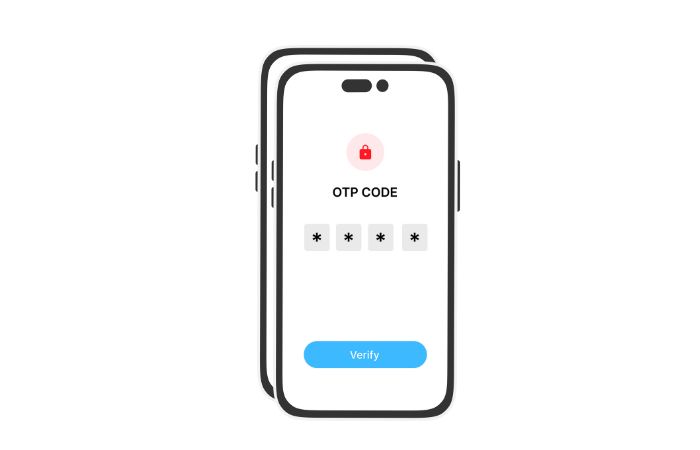Understanding the murky waters of cybersecurity can be challenging, particularly when terms like social engineering and phishing are often used as if they're the same thing. In a nutshell, what sets them apart?
Social engineering is a broad tactic where attackers manipulate human psychology to gain information or access. In phishing, a subset of social engineering, the attacker poses as a legitimate source and uses fraudulent emails or messages to trick victims into revealing sensitive data or credentials.
Still confused? In this post, our goal is to dispel the fog of confusion by diving into the details of social engineering and phishing.
We'll break down the tactics, techniques, and motivations behind each approach, empowering you with the knowledge necessary to strengthen your defenses against these sinister cyber attacks.

Social Engineering: The Art of Manipulation
Social engineering is the act of exploiting human vulnerabilities, such as trust, curiosity, or fear, to manipulate individuals into providing sensitive information or access to systems.
Attackers take advantage of people's natural tendencies to be helpful, comply with authority, or avoid conflict, making it easier to deceive them and achieve their goals.
Let's explore some common tactics and techniques used in social engineering:
Common tactics and techniques used in social engineering
Pretexting: In pretexting, attackers create a fabricated scenario or identity to gain a person's trust and persuade them to reveal sensitive information. For example, they may pose as a bank representative or an IT support technician, using this disguise to request personal data or account details.
Baiting: Baiting involves luring victims with the promise of a reward, like free software or a gift, in exchange for sensitive information or access to systems. An example would be a USB drive left in a public place containing malware that infects the victim's computer when they plug it in, curious about its contents.
Tailgating: Tailgating, also known as "piggybacking," is when an attacker physically follows an authorized individual into a secure area, such as an office building, by exploiting their courtesy or inattentiveness. For instance, an attacker might pretend to be an employee who forgot their access card, gaining entry without suspicion.
Quid pro quo: Quid pro quo attacks involve offering a service or assistance in return for sensitive information or access. An example is an attacker posing as tech support, offering to help fix a computer issue in exchange for the user's login credentials.

Phishing: A Type of Social Engineering Tactic
Phishing is a specific tactic that falls under the broader category of social engineering. Like all social engineering techniques, phishing relies on deception and manipulation to achieve its goals.
However, phishing primarily focuses on using fraudulent communication channels, such as email or text messages, to deceive and exploit unsuspecting victims. These attacks often target a large audience in the hopes of ensnaring a small percentage of individuals.
Let’s go over the common types of phishing attacks:
Various types of phishing attacks
Email phishing: Email phishing is the most prevalent form of a phishing attack, where mass-targeted emails are sent to a large number of potential victims in the hope that a small percentage will fall for the scam. These emails often contain malicious links, directing the victim to fake websites or downloading malicious attachments that can compromise their security.
Spear phishing: Unlike mass-targeted email phishing, spear phishing is more targeted. Here cybercriminals conduct research on specific individuals or organizations before crafting personalized emails designed to gain trust and credibility. The attacks are tailored to the target, including personal information and context to make the message appear more believable.
Whaling: Whaling is a form of phishing that targets high-level executives or decision-makers within an organization. The goal is often to extract sensitive information or convince the victim to authorize fraudulent financial transactions.
Smishing (SMS phishing) and vishing (voice phishing): Smishing and vishing are variations of phishing that use text messages and phone calls, respectively, as the medium for communication. In smishing, cybercriminals send SMS messages containing malicious links or requests for personal information.
And in vishing, cybercriminals use phone calls and voice messages, which may involve impersonating trusted entities or using urgent scenarios to pressure victims into divulging sensitive information.
Comparing Social Engineering and Phishing
Social engineering and phishing are both tactics employed by cybercriminals to manipulate individuals into revealing sensitive information or granting unauthorized access. Though the two terms are often used interchangeably, they have distinct differences and some overlapping techniques.
To provide a clear overview, here's a table summarizing the key differences and similarities between social engineering and phishing:
| Aspect | Social engineering | Phishing |
| Scope | Broad term encompassing various tactics | Specific type of social engineering |
| Methods | Online and offline techniques | Limited to electronic communication channels |
| Goals | Diverse objectives | Primarily focused on acquiring sensitive information or unauthorized access |
| Exploiting psychology | Yes | Yes |
| Deception/impersonation | Yes | Yes |
| Pretexting | Yes | Can be used in some phishing attacks |
Social engineering is a broader term that encompasses a wide range of manipulative tactics, including deception, persuasion, and exploitation of human vulnerabilities.
Phishing, on the other hand, is a specific type of social engineering that focuses on electronic communication channels, such as email, SMS, or phone calls, to deceive victims.
While phishing typically involves sending mass emails or targeted messages with malicious links or attachments, social engineering can take various forms like physical infiltration, tailgating, or pretexting. Social engineering tactics can occur both online and offline, whereas phishing is limited to digital communications.
Both social engineering and phishing aim to acquire sensitive information or unauthorized access, but social engineering may have more diverse objectives.
These can range from gaining entry to a secure facility, influencing decision-making within an organization, or compromising systems through technical exploits.

Triple Shield: 3 Effective Strategies to Defend Against Social Engineering Attacks
A. Get Savvy: Boost Your Awareness and Education
One of the best ways to defend against social engineering attacks is to stay informed. The more you know about common tactics, the better you can spot and avoid these tricks. Keep learning, engage in online discussions, and share your findings with friends, family, or coworkers.
B. Step Up Your Security Game
Boosting your digital defenses is essential in the fight against social engineering. Here are three simple yet effective measures you can implement:
Multi-factor authentication (MFA) - Adding an extra layer of security with MFA means attackers need more than just your password. Combine your password with a fingerprint or a unique code to make it much harder for them to break in.
Email filtering and security software - Use tools that can detect and block suspicious messages before they hit your inbox. This way, you'll lower the chances of falling for a phishing scam.
Stay up-to-date - Regularly update your operating system, apps, and security software to protect yourself from newly discovered threats that hackers might try to exploit.
C. Be Prepared: Create an Incident Response Plan
It's always better to be safe than sorry. If you have a small business, have a solid incident response plan of what to do if you're ever targeted by a social engineering attack.
Outline the steps to follow, assign roles, and make sure everyone knows the communication protocol. With a plan in place, you can minimize damage and bounce back more quickly from an attack.
Final Thoughts
Social engineering and phishing are two tactics that cybercriminals use to mess with our minds and trick us into giving away valuable information.
It's important to remember that falling victim to these attacks doesn't make us stupid. In fact, cybercriminals are experts at manipulating human psychology and emotions to their advantage.
The good news is that there are ways to defend ourselves against social engineering and phishing attacks. By being cautious about what we click on, avoiding suspicious links and emails, and staying informed about the latest threats, we can reduce the risk of falling victim to these malicious tactics.
And always remember - falling victim to a social engineering or phishing attack doesn't make you stupid, it just means you're human.